Insects That Can Help Grow Better Cannabis
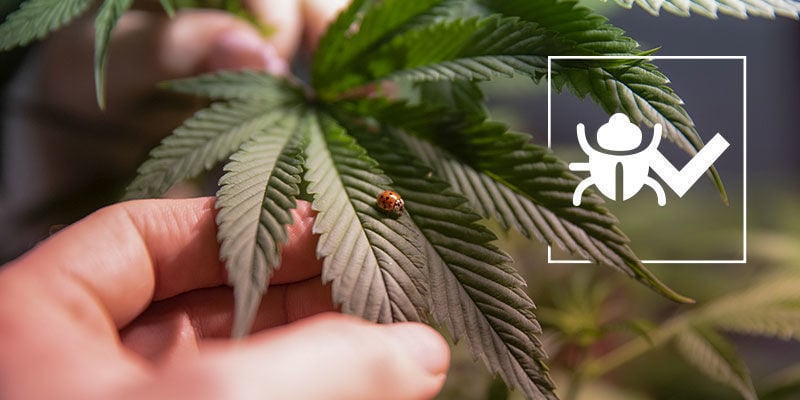
Not all insects are intent on chewing your weed plants to pieces. On the contrary, many types of insects inadvertently defend cannabis plants from attack. As a grower, you can recruit the likes of ladybugs, rove beetles, and even praying mantises to keep your plants safe and eliminate dependence on toxic chemical insecticides.
Pests pose a serious problem when growing cannabis. Left unchecked, they can make a quick meal out of the largest of weed plants. Thankfully, nature provides a host of beneficial insects that hunt down and consume pest species rapidly and effectively. Learn more about these helpful critters, and how to harness them, below.
Why use insects to help grow better weed?

To the new gardener, the word “insects” carries negative connotations. Aren’t these the tiny critters that chomp on leaves, chew threw stems, and make growing plants more stressful than blissful? While many species do prove problematic when trying to procure a cannabis harvest, there are a host of insect allies that make raising weed much easier. These organisms offer a bunch of benefits, from hunting down and terminating pests to cycling nutrients in the soil and making them available to your plants, resulting in superior yields.
An introduction to integrated pest management
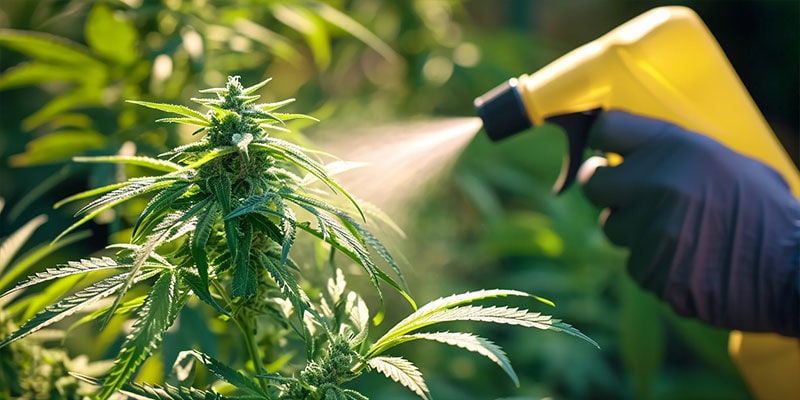
From the dawn of agriculture in 8,500 BC, humans have constantly waged battles against insects to protect crops. Farmers started using sulphur compounds to control insects as early as 4,500 years ago in Sumeria (Umetsu & Shirai, 2020), and spraying orchards with arsenic became routine in the late 1800s (Hood, 2006). However, humanity's war on insects climaxed in the first half of the 20th century, when the acceleration of weapons technology during both world wars became interlinked with agricultural developments; insecticides became weapons and weapons became insecticides (Willis, 2018).
Today, farmers routinely douse crops in noxious chemicals to reduce losses at the hands (or, more correctly, mouths) of insect pests. With around 3.5 million tonnes of pesticides sprayed annually (Sharma et al., 2019), and with insect populations declining and ecosystems collapsing, pioneering researchers and practitioners have sought out gentler and kinder and ultimately less destructive means of growing plants, such as integrated pest management (IPM).
IPM harnesses sustainable methods for dealing with marauding insects. Using methods rooted in both nature and technology, this approach seeks to minimise insect damage while considering the impact of growers on ecosystems, both local and afar. Complex IPM programs using a suite of biological, physical, and chemical tools are employed in well-funded agricultural operations, but humble home growers are also starting to put IPM into practice using simple tools.
For example, the cultivation of companion plants in close proximity to vegetables and cannabis plants helps to deter pests while attracting beneficial insects. Likewise, the release of predatory insects into the garden, and active efforts to keep them around, help to keep pest populations at acceptable levels.
Which cannabis pests can insects help with?
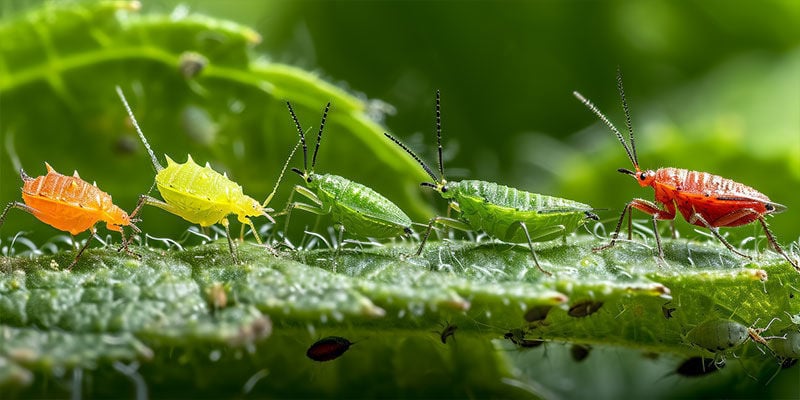
If you’ve grown cannabis more than a couple of times, chances are you’ve encountered at least a couple of troublesome pest species. The damage they cause varies considerably based on the species in question and how well they manage to gain a foothold; you may have experienced anything from a couple of chewed leaves to the complete destruction of plants. Using IPM, and specifically by introducing predatory insects, you can shield your plants against these common foes:
- Fungus gnats: Adult fungus gnats cause little damage, with their presence considered nothing more than an annoyance. However, in the larval stage, this creature damages roots and causes stunted growth.
- Leaf miners: The larvae of several species of insects, these critters tunnel through leaves and feast on juicy tissue as they go. Cosmetic damage aside, they also reduce the capacity of plants to photosynthesise.
- Aphids: As some of the most damaging and common cannabis pests, aphids use their sharp mouthparts to penetrate plant tissue and suck out nutrient-rich sap.
- Spider mites: Although not spiders, these mites spin silk all over cannabis canopies. Large infestations can greatly affect plant health and productivity.
- Whiteflies: Whiteflies are known to transmit viruses between some key agricultural crops. Much like aphids, they’re sap-sucking insects that rob plants of vital resources.
- Thrips: Would you look at that—another pest species equipped with sharp mouthparts that suck sap! Left unchecked, these winged nuisances cause leaves to become papery, distorted, and drop to the ground.
- Mealy bugs: These small white bugs also feast on sap from plant phloem vasculature. After dining, they excrete honeydew that attracts bothersome moulds.
Beneficial insects to enhance cannabis cultivation
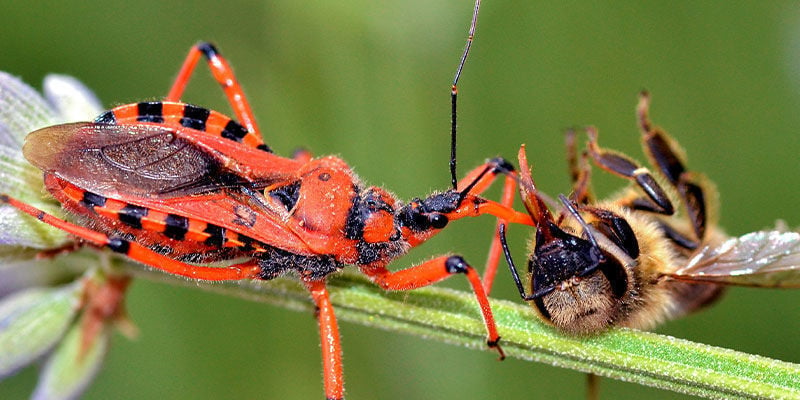
Each of the bugs mentioned above can cause serious damage to cannabis plants and take the wind out of the sails of new growers. Below, you’re going to discover a handful of beneficial insect species that can stop them in their tracks in both the grow room and the garden. Learn about key insects that help cannabis plants in more ways than one.
Assassin bug
As their name suggests, assassin bugs are terrestrial ambush predators. These stealthy critters range from 12–36mm in size and hunt by injecting lethal saliva, through a long rostrum, into their prey.
Usefulness for cannabis
Assassin bugs are general predators that feed on a host of insects, both beneficial and pest species. They can help protect cannabis plants by targeting aphids and reducing their populations.
Application
When assassin bugs begin to emerge from their eggs within your purchased container, deposit the egg clusters on foliage close to pest infestations. Eggs typically hatch within a week of purchase.
Green lacewings
Green lacewings belong to the large insect family Chrysopidae, and there are around 2,000 different species in total. These delicate insects range from 6–65mm in size.
Usefulness for cannabis
Green lacewings consume a diverse diet that includes pollen, nectar, and honeydew. However, they also hunt down insects; some species are known to consume up to 100 aphids in a single week.
Application
Green lacewings are sold as larvae; containers of 500 larvae will treat an area of around 50m². Simply empty the shake tube that the larvae arrive in over any affected areas.
Ladybug
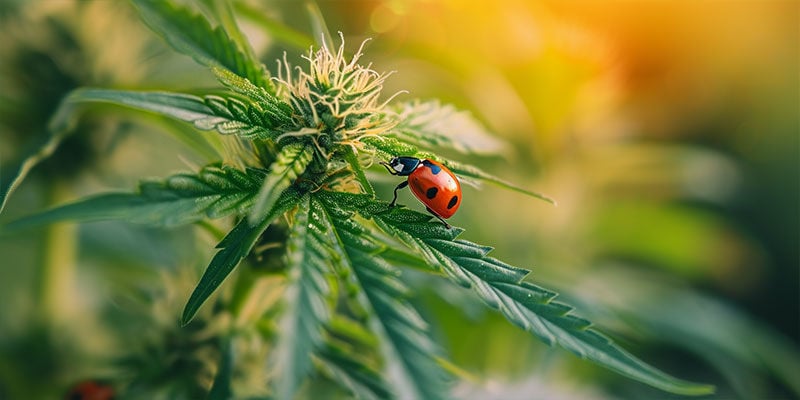
Ladybugs come in many different colours. These insects play an important ecological role, serve as important biodiversity indicators, and do a great job at keeping pest populations down.
Usefulness for cannabis
You can view ladybugs as an effective defence force in your cannabis garden or grow room. A single specimen has the ability to hunt and devour up to 5,000 aphids over its year-long lifespan.
Application
Ladybug larvae have particularly ravenous appetites. Apply a bag or container of larvae directly to affected areas between March and September when temperatures are above 10℃.
Predator Mite
Predatory mites are highly beneficial additions to any grow room or garden. These tiny critters belong to the same family as spiders and ticks and possess a pear-shaped body and relatively long legs.
Usefulness for cannabis
Predatory mites are essentially cannibals. They seek and destroy spider mites, one of their closest relatives. In doing so, they stop them from inundating cannabis canopies with their messy silk.
Application
Predatory mites are able to live for up to 50 days without food, making them a good preemptive strategy before pest populations become substantial. Simply empty the mites and bran husks inside the tube across plants in your grow room or garden.
Rove beetle
As one of the largest families of insects, rove beetles appear in many sizes and shapes, from as little as 1mm up to 35mm. They possess a long and flexible abdomen and consume a varied diet that includes prey insects.
Usefulness for cannabis
Rove beetles roam around the soil in search of small insects such as springtails. They also consume the eggs and larvae of some pests and also devour mites.
Application
Rove beetles are available as adult beetles supplied in tubes. Simply apply them to the soil around your affected plants. You can also attract rove beetles to your garden by frequently applying organic matter such as compost and other forms of mulch.
Praying Mantis
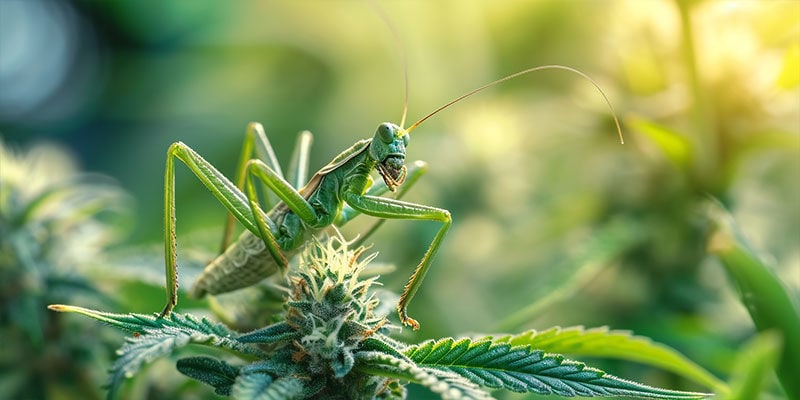
Praying mantises are among the most fascinating of predatory insects. Not only do they look alien, but their patient and stealthy hunting technique allows them to effectively take down many types of insects, spiders, and even small amphibians.
Usefulness for cannabis
Praying mantises sit patiently in cannabis canopies waiting to strike their prey. When the opportunity arises, they attack and eat aphids, caterpillars, and whiteflies.
Application
Praying mantis eggs arrive in cases called ootheca. Keep the case in a closed container, and at a temperature of 15–26℃ until they hatch. Releasing them around affects plants immediately after hatching to prevent them from eating each other!
Nematodes
Although not insects, nematodes provide an excellent defensive measure against common cannabis pests. There are many types of nematodes, and those that don’t attack plant roots benefit the garden and grow room by cycling nutrients in the soil.
Usefulness for cannabis
Predatory nematodes are a popular go-to option when dealing with slug infestations. When applied to the soil, they infect slugs and kill them in as little as four days.
Application
Add a packet of nematodes into a full watering can and stir gently. Apply around the base of cannabis plants during the early morning or later evening.
A natural approach to cannabis pest control
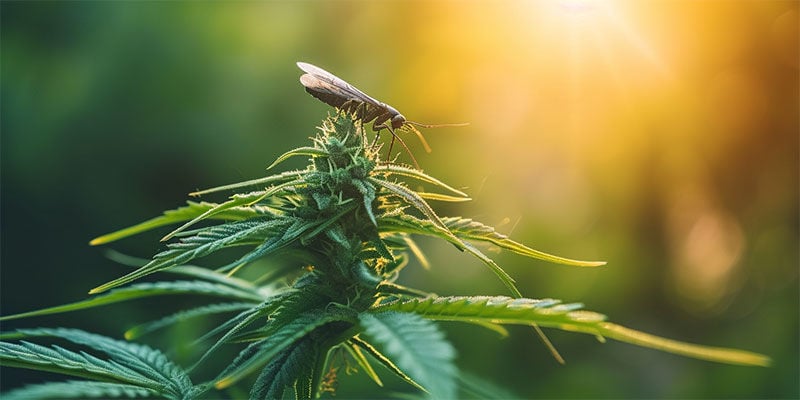
You don’t need to rely on toxic chemicals to grow great weed. In every natural ecosystem undisturbed by humans, nature exhibits balancing predator-prey cycles to keep everything in order. Using IPM, you can utilise this in your garden and grow room when cultivating weed. As well as introducing eggs, larvae, and adult insects into your growing space, consider cultivating













 United States
United States










